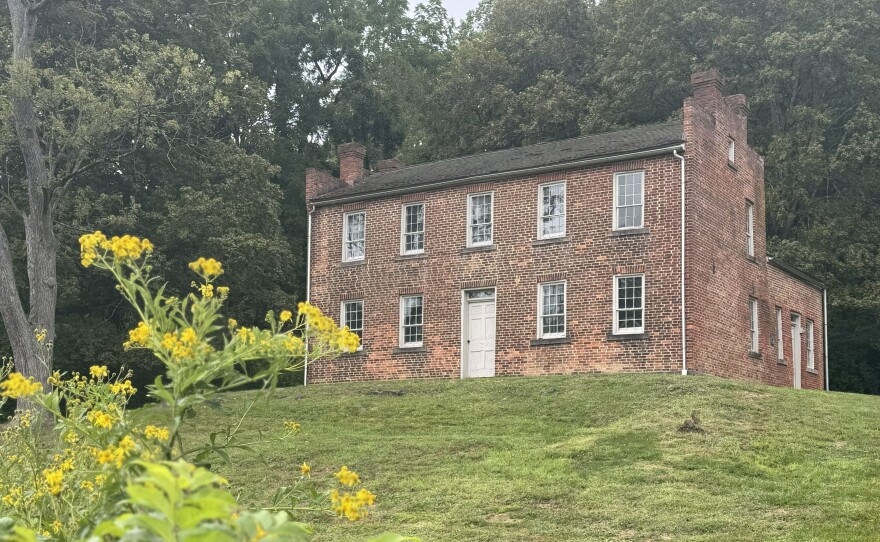When you think of the Cuyahoga Valley National Park, its natural attractions, hiking trails or waterfalls might first come to mind.
The park also has an abundance of buildings interspersed throughout its 50-square-mile landscape.
Maintaining them takes time and resources, said Kent Cook, a historic preservationist for the park.
Inside a maintenance garage in Brecksville on a late summer afternoon, Cook was working on storm window replacements for the park’s Canal Exploration Center, a museum in Valley View.
“That’s what I love. You get to match something that no one else has matched since they made it,” Cook said. “That part’s pretty cool.”
The Canal Exploration Center, once a store along the Ohio and Erie Canal, is just one of about 300 structures the park owns and maintains.
For the past three years, Cook has helped repair and replace windows and doors on historic buildings and other miscellaneous restoration projects, he said.
Often, that means using materials and tools from another century, Cook said. Sometimes, he even has to make his own molds. The National Park Service has strict guidelines for repairing historic buildings, he said.
“I get to recreate what someone originally made that actually cared, put their heart and soul into these projects,” Cook said.
The park also restored the Happy Days Lodge, a former youth camp that’s now a wedding and event venue, and old homes, like the Stephen Frazee House, considered one of the first brick houses built in Cuyahoga County, said Grant Day, cultural resources program manager for CVNP.
The Jaite Mill Historic District, houses constructed for the mill's employees in the early 1900s, have been restored and are now used for the park's main offices.
The park also maintains various bridges, barns and farm buildings, Day added.
Limited budget for maintenance, repairs
Many of the structures were built in the 1800s and give a glimpse into the region’s canal and farming histories, Day said. Most of them need some sort of repair, he said.
“They all need help. If you take a closer look at some of these buildings, you can see the paint peeling, some of the wood bulging,” Day said. “Once the water starts getting in, the buildings go really quick … and we rely on our friends groups primarily for that, because our base doesn't cover that.”
The park’s federal funding is currently paused due to the government shutdown. However, its budget for preservation is typically limited, Day added. They often rely on the park’s nonprofit, the Conservancy for Cuyahoga Valley National Park.
“Our base funding doesn't cover our cyclic maintenance, even for the houses and buildings that we occupy for offices,” Day added.
Historically significant buildings – such as the dozens listed on the National Register of Historic Places - get the most funding and attention, he said.
“Unless there's a specific event, or something occurred there, they're probably not going to be significant within our park,” Day said.
For example, the park used to own hundreds of barns and other farm structures. Most have been demolished over the years, he said.
To be considered historically significant, a building must be at least 50 years old and associated with a historical event, person, trend or archeology, Day said.
Buildings that aren’t considered historically significant eventually deteriorate and may ultimately be at risk for demolition, due to a lack of staff and resources, he added.
“When the staff gets cut and the money gets cut, then ... something's got to give, right?” Day said. “You’ve got to prioritize and … what's more significant, right? This building or that building, or this feature of the canal, or this part of the canal? So, yeah, hard decisions have to get made.”
A 2024 infrastructure fact sheet from the National Park Service estimated the park has $98 million in deferred maintenance. NPS proposed $33 million to demolish excess structures at the park. A list of projects will not be released until the new federal budget is finalized, according to the document.
A CVNP spokesperson said she was not aware of any demolition plans at this point.
The best way to keep a building from deteriorating is to keep it occupied, Day added. Public support can help.
“Just folks going out and visiting once or twice a month, running into other public going, ‘Hey, somebody does care about this building,’ and can see that, that can help things along too,” Day said.
In the meantime, Cook and other preservationists are hard at work doing preventative maintenance on buildings to keep them in the best shape possible.
“For me, it's just like a set of pride,” Cook said. “Unlike new construction where they just throw it up with staples and glue, I can put my heart and soul into it and say, ‘I'm keeping something alive that someone 200 years ago put their heart and soul into.’”








